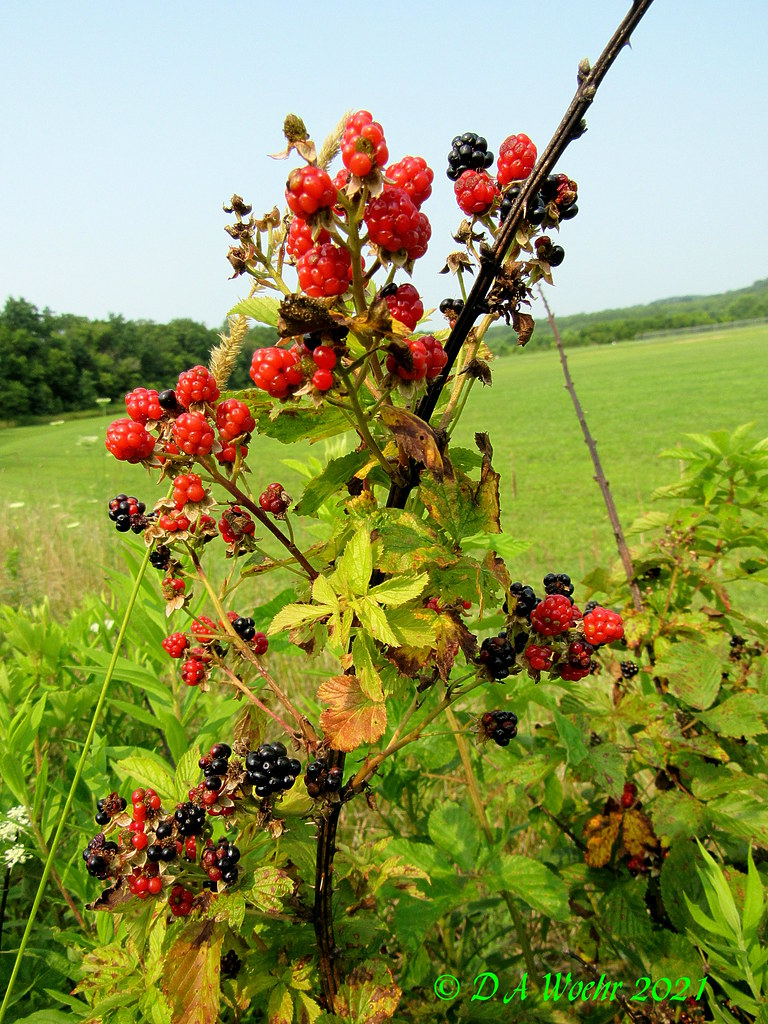#allegheny blackberry
Photo
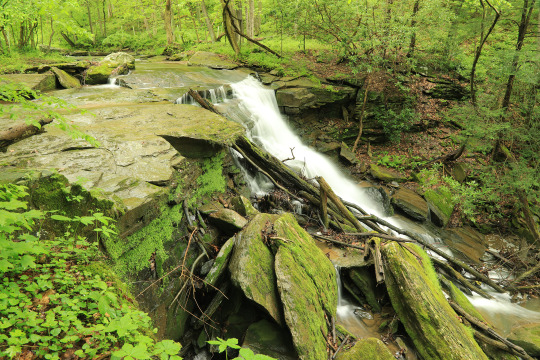

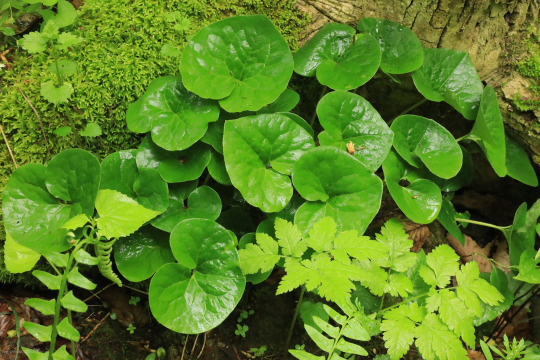


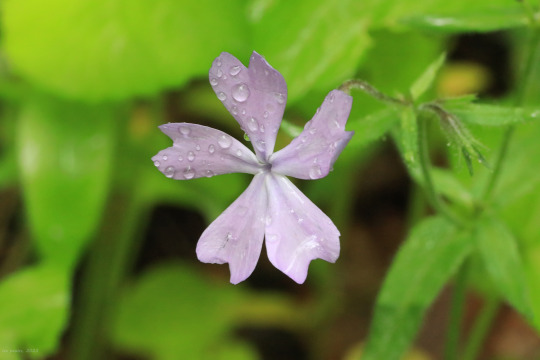
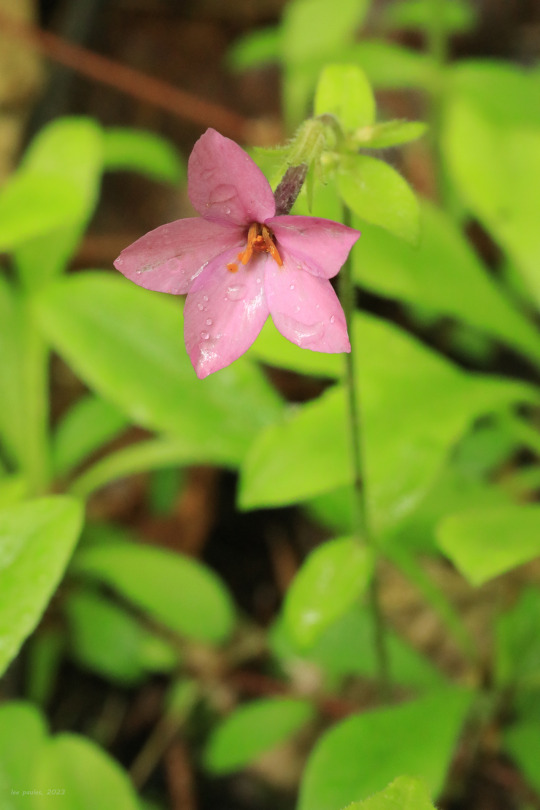
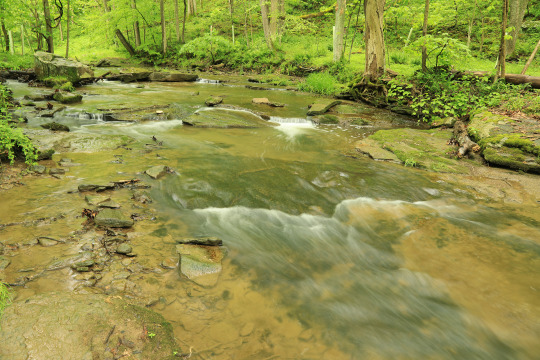
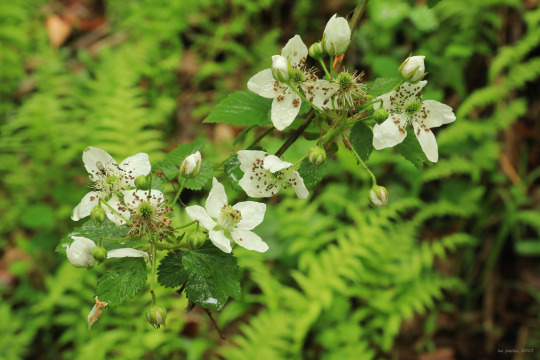
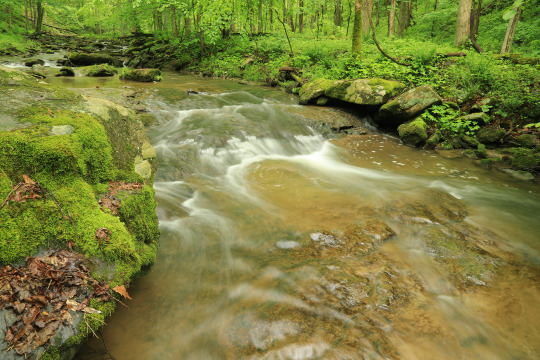
Part 2: After the Rain - Life in an Appalachian Temperate Forest.
From top: Wild ginger (Asarum canadense), also known as Canadian snakeroot; Philadelphia fleabane (Erigeron philadelphicus), a lovely spring aster deserving of a more dignified name; white wood violet (Viola sororia albiflora), a white variation of the common blue violet; woodland phlox (Phlox divaricata), also called wild blue phlox; creeping phlox (Phlox stolonifera), a mountain native and the most delicate and beautiful of Appalachia’s many wonderful phlox species; and Allegheny blackberry (Rubus allegheniensis).
#appalachia#vandalia#west virginia#toms run preserve#west virginia land trust#temperate forest#rain#intense green#flora#wildflowers#may#wild ginger#canadian snakeroot#phildaelphia fleabane#white wood violet#woodland phlox#wild blue phlox#creeping phlox#allegheny blackberry#common blackberry
457 notes
·
View notes
Text
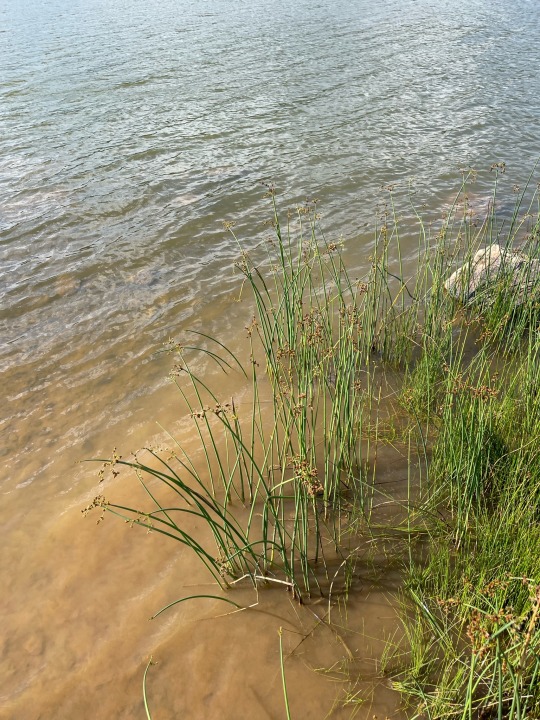




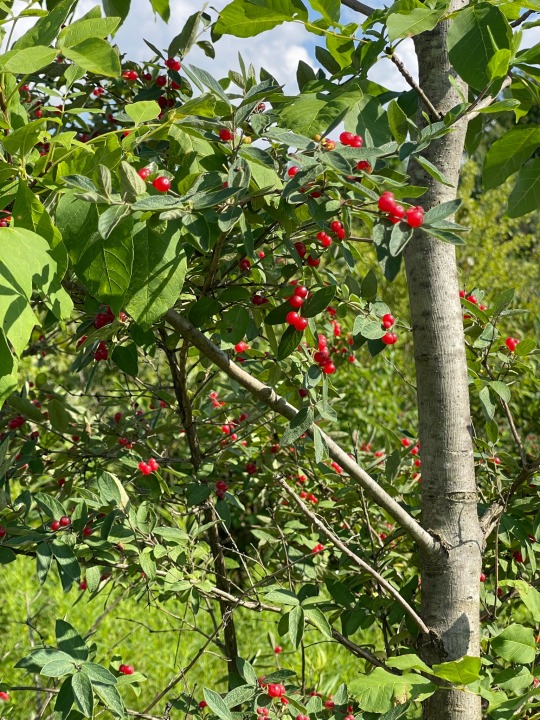
8 notes
·
View notes
Text

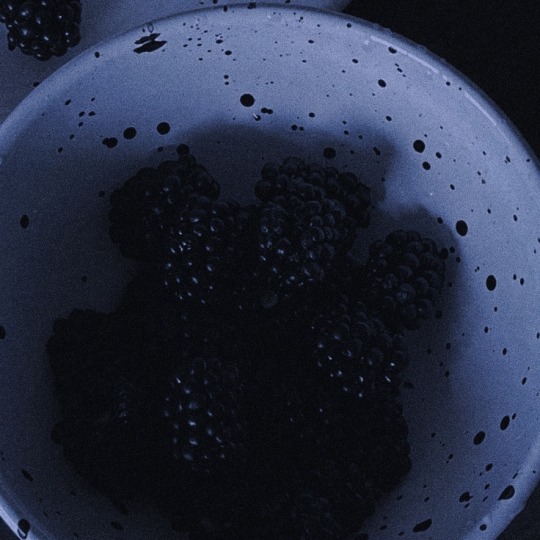

Rubus allegheniensis, Allegheny blackberry. found widespread in eastern and central North America.
#rubus allegheniensis#rubus#allegheny blackberry#blackberry#blackberries#fruit#fruits#fruit of the week
0 notes
Text
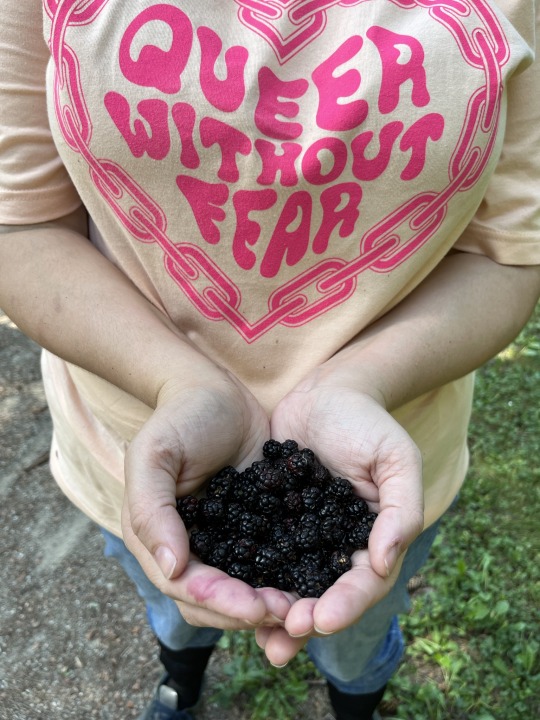
Blackberrying
1 note
·
View note
Text
i got this book The American Meadow Garden by John Greenlee from library and I had high hopes about it but unfortunately it's much more focused on design aesthetics than actual ecology, and makes some baffling incorrect statements

first of all, genus Rubus includes all brambles and other plants including raspberries and dewberries, second, North America does in fact have several native blackberries, and third, their aggressiveness is various. Allegheny blackberry behaves itself pretty well if you just cut it back.

WHY does this writer have such furious hatred for Canada goldenrod of all things. Solidago is basically THE best thing you can plant in North America to support bees.
I totally believe that it can be super aggressive (it's ultra invasive in areas of Asia) but maybe I'm biased, since my meadow began with the most miserable possible soil on Earth, and its ability to survive is a positive from my point of view.
1K notes
·
View notes
Text

Allegheny Blackberries
49 notes
·
View notes
Text
Last time I tried this it loaded forever and nothing happened. So let's try again:

Oenothera speciosa (pink evening primrose)

Gaillardia xgrandiflora (blanket flower)

Allium schoenoprasum (wild chives)

Rubus allegheniensis (Allegheny blackberry)

Drymocallis arguta (tall cinquefoil)

Armeria maritima (thrift seapink)

Erigeron glabellus (streamside fleabane)

Aquilegia canadensis (Canada columbine)

Fragaria virginiana (wild strawberry)
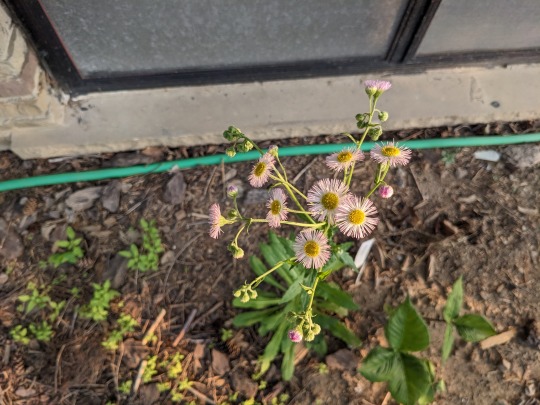
Erigeron philadelphicus (Philadelphia fleabane)

Lupinus polyphyllus (bigleaf lupine)

Mimulus guttatus (yellow monkeyflower)
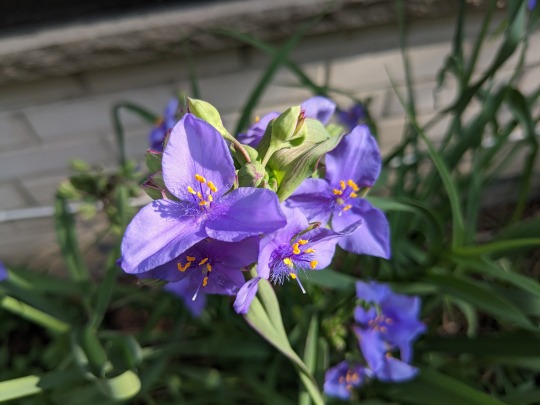
Tradescantia ohiensis (Ohio spiderwort)
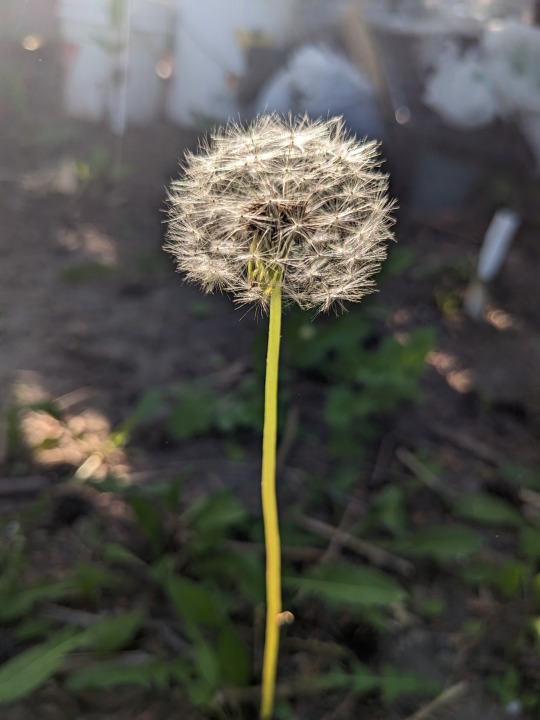
Taraxacum officinale (dandelion)

Hydrophyllum virginianum (Virginia waterleaf)

Fragaria vesca (woodland strawberry)
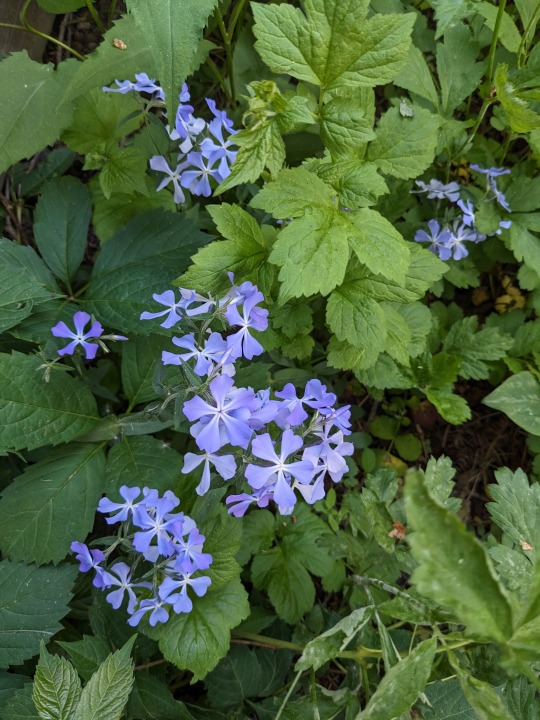
Phlox divaricata (woodland phlox)

Cerastium arvense (field chickweed)

Vaccinium angustifolium (lowbush blueberry)
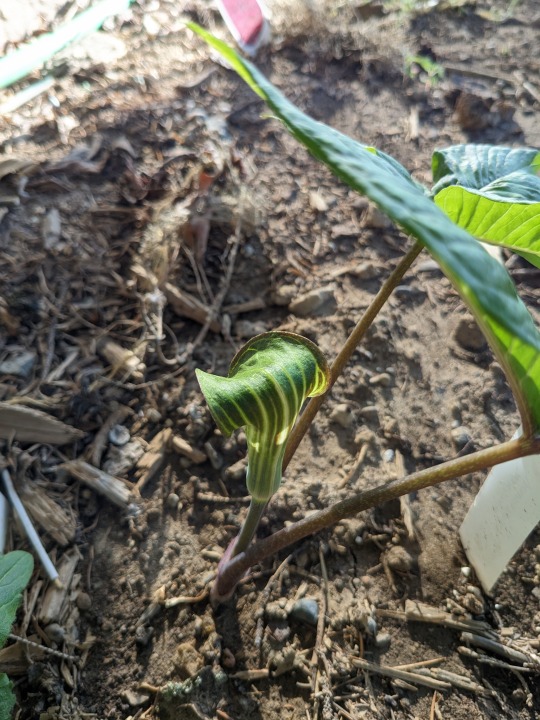
Arisaema triphyllum (jack-in-the-pulpit)

Trillium cuneatum (sweet little Betsy)

Zizia aurea (Golden alexanders)

Calctha palustris (marsh marigold)

Myosotis laxa (smallflower forget-me-not)

Trillium erectum (red wakerobin)

Uvularia grandiflora (largeflower bellwort)

Heliopsis helianthoides (sweet oxeye)

Symphyotrichum novae-angliae (New England aster)

Silphium perfoliatum (cup plant)
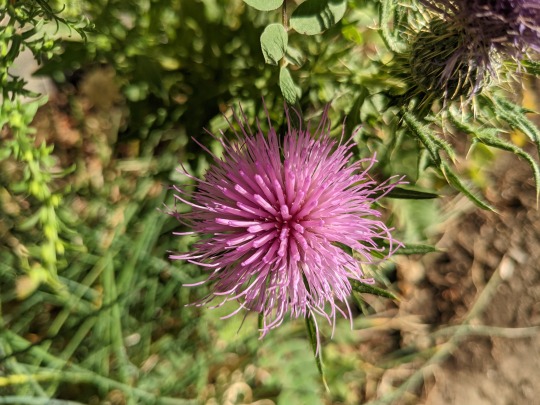
Cirsium discolor (field thistle)
And the rest will have to wait because tumblr cut me off. lol
7 notes
·
View notes
Text
We have blackberries growing in our backyard (Allegheny i think) and when i pointed them out to my mom she was like "oh that's what those are? I've been cutting them back for years" 😭
1 note
·
View note
Text
Grateful To Walk Again
Yesterday marked one year since I had emergency surgery to repair a fractured tibia plateau and shattered tibia. Today I had my one year appointment with my orthopedic surgeon. This is the update on my progress.
Check out my Handmade Collection at The Allegheny Blackberry!
youtube
View On WordPress
0 notes
Video
Allegheny Blackberries by Picsnapper1212
Via Flickr:
These wild blackberries grow everywhere they can find full sun in undisturbed ground. Following a spring white bloom the berries ripen much to the delight of wildlife. Even to my own delight. I have picked many of these and eaten them on the spot, or brought them home to put on breakfast cereal or vanilla ice cream.
2 notes
·
View notes
Photo
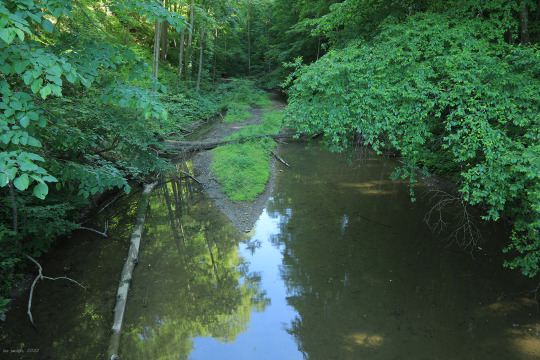


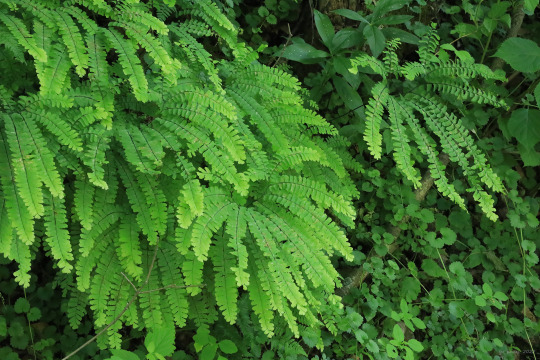

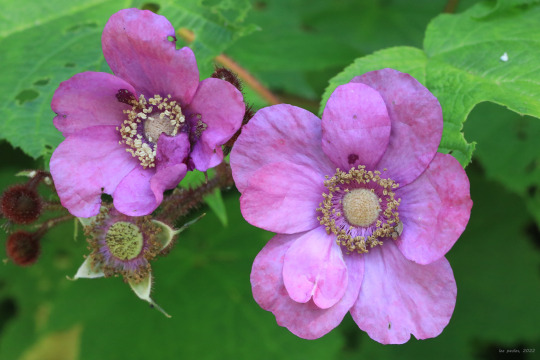

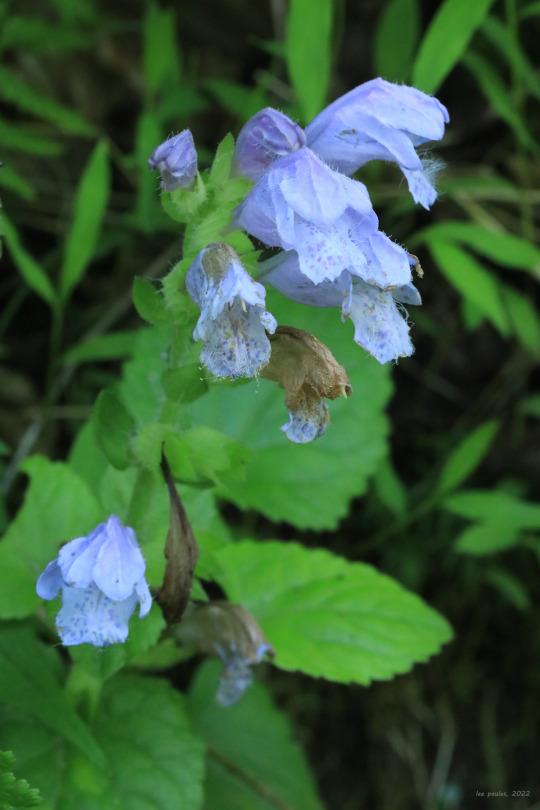
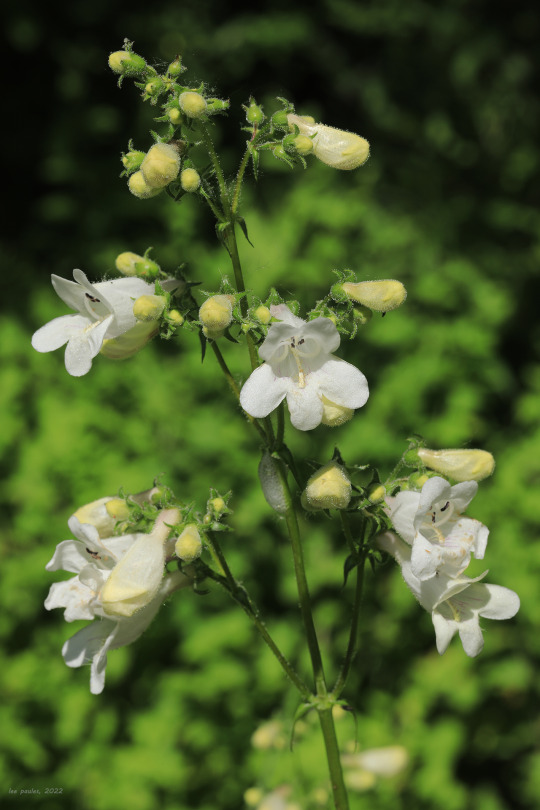
A gorgeous late spring afternoon means only one thing to me: a long, leisurely bike ride on the Mon River Trail. Eastern goat’s beard (Aruncus dioicus), with its gaudy, plume-like flowers, is now at peak bloom on the moist, rich slopes bordering the trail. This rhizomatous perennial in the rose family is one of Appalachia’s most spectacular spring-blooming wildflowers and has a rambling, bushy habit that makes it the perfect ornamental for a damp, partially-shaded spot in a native wildflower garden. This plant is easily mistaken for Appalachian false goat’s beard (Astilbe biternata), which grows in the same habitat and has a similar flower plume but with a different leaf arrangement.
Other notable plants now coming into their own (from top): northern maidenhair fern (Adiantum pedatum), which cascades down the moist slopes along the trail in radiant waves; purple-flowering raspberry (Rubus odoratus), a showy, suckering cousin to Allegheny blackberry with gorgeous flowers and foliage and bristly, not-so-tasty fruit; whorled loosestrife (Lysimachia quadrifolia), an elegant, upright perennial with yellow flowers borne from the leaf axils; Meehan’s creeping mint (Meehania cordata), a striking, deer-resistant perennial that forms spreading mats of lavender flowers; and foxglove beardtongue (Penstemon digitalis), a tall, captivating perennial named for the hairs that grow from its staminode (long, sterile stamen).
#appalachia#vandalia#west virginia#mon river trail#spring#wildflowers#flora#fern#aruncus dioicus#eastern goat's beard#eastern goatsbeard#bride's feathers#adiantum pedatum#northern maidenhair fern#rubus odoratus#purple-flowering raspberry#lysimachia quadrifolia#whorled loosestrife#meehania cordata#meehan's creeping mint#meehan's mint#penstemon digitalis#foxglove beardtongue
67 notes
·
View notes
Photo

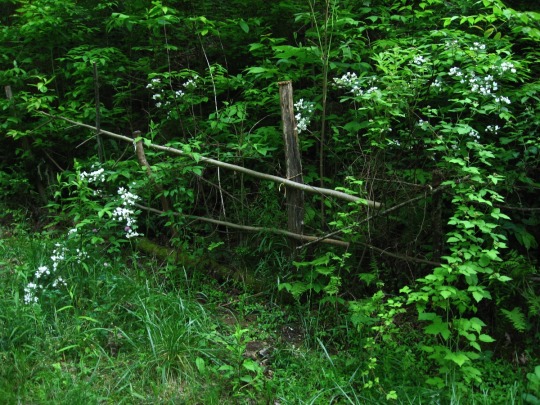
These native blackberries (pretty sure these are common/Allegheny blackberries, Rubus allegheniensis) have larger and showier flowers than the raspberries and other improved blackberries.
16 notes
·
View notes
Photo



Burned some invasive species down today. This patch was filled with Japanese and Bush Honeysuckle, Allegheny Blackberry and Multi-flora Rose.
It is beneficial to burn forest floors in some cases to kill off invasive species that wont die from simply spraying herbicide.
According to tallgrassrestoration.com “ Prescribed burning is used for a variety of reasons. One of the most notable contained burning benefits is to maintain the health of an existing natural area containing native plants. The fire helps manage weeds and other growth and thus helps to reduce the risk of wildfires, but it also can help restore nutrients and help lead to more desirable plant growth in the future. Woodlands, prairies, and wetlands are perfect natural communities for contained fires. “
1 note
·
View note
Text
POLYFLORAL HONEY
Beechwood Honey
It's popularly known as Honeydew honey and mainly produced in New Zealand's South Island. It has extraordinary aroma & comes from the sap produced by aphids on the bark of beechwood trees giving distinct stature in the honey index. Beechwood honey is fondly mixed into smoothies, sauces, pancakes, and fruits like a sweet drizzle. This honey is a good supplement for improving the body's immunity and digestive system.
Berry Honey
Berry Honey is a rich source of anthocyanin flavonoids having good anti-inflammatory properties. It's considered good for eyes and even helps in fighting against colon cancer.
Black Bee Honey
This is absolute form of raw honey- unpasteurized & unblended. Majorly found in Exmoor National Park has a smoky aroma and becomes runny on heating
Canola Honey (Brassica napus)
Canola is an ideal habitat and food source for honeybees: Canola flowers produce high amounts of nectar and this nectar has a good sugar profile for honey production. The large amounts of pollen offer a good nutritional balance of amino acids, protein and fats.
Canola honey is one of the most delicate in flavour, crystalize easily & have low acid levels. Being prepared from species of rapeseed, holding 80% of Canadian honey sales.
Golden Honey
Velvety-Smooth honey having a deep flavour with a blend of clover and wildflower honey varieties. It has a sweet taste entwined with delicate floral undertones.
Jamun Honey (Syzygium cumini)
Jamun Honey is sourced from bees that feed and forage primarily on Indian blackberry commonly known as JAMUN Jamun. It is collected from the south Karnataka region and is harvested in August when the Jamun flowers blossoms. It is dark amber in color and comparatively less sweet than other honey.
Jamun (Syzygium cumini) honey is famous for its antihypoxic activity. A specific dose of this honey can be topically applied to cure the deadly Fournier gangrene.
Since it has high osmotic pressure and viscosity, it prevents microbial growth and promotes wound healing when applied to the affected areas.
Jamun honey is renowned for anti-hypoxic activity. A specific dose of this honey can be topically applied to cure the deadly gangrene. Since it has high osmotic pressure and viscosity, it helps in microbial growth and promotes wound healing when applied to the affected areas.
Kashmir Honey
Gently nourishes skin with natural single flora of Kashmir Honey. It has all beneficial components which help in boosting immunity.
Chestnut Honey (Castanea sativa)
Of the common species of Chestnut trees, the Sweet Chestnut (Castanea sativa) grown mainly in Europe produces honey, and the Allegheny Chinkapin (C. pumila) grown in Eastern USA produces a strong and bitter honey.
The chestnut tree belongs to the same family as beeches and oaks. For thousands of years the chestnut was a primary source of nutrition in the mountainous areas of the Mediterranean where grains did not grow well. The primary honey producer, the sweet chestnut tree (Castanea sativa) is common in Europe where it was introduced from Sardis (in what is now Turkey) thousands of years ago, hence the name Sardinian Nut, now known simply as the chestnut…not to be confused with Sardinian honey, so called because it is produced on the Italian island of Sardinia.
It possesses a unique aroma and some of its varietals are reported to taste bitter. This amber-colour honey is mildly sweet and its low Glycemic Index makes it honey suitable for diabetics.
Maple Honey (Acer macrophyllum)
The western honey bee or European honey bee (Apis mellifera) is the most common of the 7–12 species of honey bees worldwide. The genus name Apis is Latin for "bee", and mellifera is the Latin for "honey-bearing", referring to the species' production of honey.
Has the aroma of maple trees in bloom, with a sweet almost medicinal scent to it. Maple Blossom Honey is only available during the earliest days of spring from the blossoms of big leaf maple trees.
Cotton Honey (Gossypium hirsutum)
Cotton honey first sounded like a joke to me. I mean, cotton is for clothes, for good quality clothes, breathable and soft.
The only image I had in mind of the plant named cotton, was from an old movie where black slaves were gathering white balls of fluffy cotton from a huge field. I remember the contrast between their black ebony hands and the white balls.
I never imagined honey can be produced from those plants, because in my mind there were no flowers attached. But then, I thought the same when I first heard of pine honey. Pines don’t have flowers and yet honey can be produced from them.
Made from the visiting the flavours of cotton plants, it doesn't taste light cotton, but rather has a complex flavour with both sweetness and tartness, unique and delicious.
Neem Honey (Azadirachtaindica)
Neem honey is a popular Ayurvedic treatment and can be commonly found in India where Neem trees (Azadirachtaindica) are common. It is used to lower high blood pressure, diabetes, skin problems, allergies, dental illnesses, and throat infections. Highly valued in Ayurveda for its medicinal properties, Neem honey is as appreciated as Maharishi honey. It is known to be anti-inflammatory, anti-coughing and antiseptic. Folk medicine uses it in lowering high blood pressure and to treat diabetes (!), skin problems, dental diseases, infected throat, and allergies.
Medicinally valued Neem honey is a Bitter-tasting variant mainly produced in warm tropical countries like India. It’s an Ayurveda medicine for lowering high blood pressure, treating diabetes, skin problems, dental diseases, infected throat, and allergies.
Pine Tree Honey (çam balı)
Pine honey Turkish: çam balı is a type of honeydew honey. It is a sweet and spicy honey, with some woody notes, a resinous fragrance and dark amber color. It is a common breakfast dish in Turkey, where it is drizzled over yoghurt and eaten with bread.
Pine honey is an unusual honey because it is not produced entirely by honey bees. It is produced by bees that collect honeydew (sugary secretions) from a scale insect species called Marchalinahellenica, which lives on the sap of certain pine trees. The marchalinahellenica can be found on the Turkish Pine (Pinus brutia), as well as the Aleppo Pine (Pinus halepensis), Austrian Pine (Pinus nigra), Scots Pine (Pinus sylvestris) and Stone Pine (Pinus pinea).
Pine honey is produced in eastern Mediterranean Pinus brutia forests. Turkey produces 92% of the world’s pine honey. Muğla Province accounts for 80% of Turkish pine honey production.
Pine Tree honey (also known as forest honey, fir honey, honeydew or tea tree honey) holds the majority of honey production in Greece. It is not particularly sweet and tastes a little bitter with a strong aroma. Relatively rich in minerals and proteins, this honey is resistant to crystallization.
Pumpkin Blossom Honey (Cucurbita)
Pumpkin honey is one of the rarest of honeys, so it is a special treat when available. It is an excellent honey for cooking, baking, canning, and wonderful for marinades, sauces, and dressings. Whip it into a tasty honey butter and you wont be disappointed. Pumpkin Honey is reminiscent of pumpkins and other squash, even having an orange cast to the color. It is wonderful for fall and winter cooking.
Pumpkin Blossom honey is dark amber-coloured having a light floral fragrance. It’s a suitable topping for dishes and desserts and tastes good when paired with savoury or spicy barbeque sauce. It also tastes great when drizzled with sweet potatoes, yoghurt, and desserts.
Rainforest Honey (Apis Dorsata)
The bees that produces this precious honey is called Apis dorsata or Giant Honey Bees, and they would only build hives on canopies of Koompassiaexcelsa, also known as Tualang tree - Hence the name Tualang honey.
Having a rich floral aroma, rainforest honey originates from rainforests of Brazil, Australia, Tasmania, Thailand, the US, etc. It is popularly used in cooking and baking and hailed as an excellent sauce ingredient, also favorite among the children & used as a breakfast jam or mixed into a honey drink
Rata Honey (Metrosiderosrobusta)
It contains live enzymes, minerals and vitamins, making it a tasty super food, perfect for displays with cheeses but also healthy and nutritious as well. Our Rata honey is sourced from the protected Rata tree found in New Zealand's National Forests.
Rata is one of several species of Rata found in New Zealand but is the one that most regularly produces a honey crop, although even this honey is sometimes in very short supply. Anyone who has seen the Rata flowering in January in the Otira Gorge west of Christchurch cannot forget the sight of this brilliant red carpet covering the mountains. This area produces the purest Rata honey, very white in colour with a subtle, distinctive flavour, mild and rich - but not sweet, almost salty, considered by many to be the best of New Zealand Honeys.
Rata honey is a light colour & buttery smooth varietal that has impressed many serious honey enthusiasts. It has a mild, subtle taste and yet very memorable, pleasantly sweet aroma. Rata honey has a relatively high glucose content. It crystallizes quickly and thus is usually processed into a cream, honey. When mixed with water, it makes an absolutely delicious, soothing tonic with a fruity hint.
Tualang Honey (Apis Dorsata)
Tualang honey (TH) is a Malaysian multifloral jungle honey. The honey is produced by the rock bee (Apis dorsata), which builds hives on branches of tall Tualang trees located mainly in the north-western region of Peninsular Malaysia.
It is claimed to contains more nutrients & minerals than Manuka Honey. Tualang Honey has one of the lowest glycemic index in honey, despite its savoury sweet taste. Eating it does not spike your blood sugar levels as much as other honey. It has half the GI of table sugar and even lower than white bread, making it the perfect, super healthy alternative for table sugar and can be easily incorporated into any diet or recipe. Tualang Honey contains the highest amount of antioxidants & anti-inflammatory agents in honey. It improves cardiovascular health, stimulates fast wound healing, reduces scarring and is extremely effective against persistent coughs & sore throats or other viral-borne diseases.
The tualang honey is a multifloral jungle honey, produced by an Asian type of bee called Apis dorsata, in nests hanging from the high branches of the tualang trees.
Referred as the "champagne of honeys" or "Queen of honey", this honey is produced in the Southeastern U.S. swamps. It is usually light golden amber with a mild, distinctive taste. Tualang honey is one of the sweetest honey varieties because of its high fructose content and it hardly granulates.
Tulsi Honey (Ocimumtenuiflorum)
Tulsi Honey is prepared by infusing Krishna tulsi leaves with unprocessed honey. Honey an elixir, when mixed with Tulsi, works out wonders for your body and mind. It strengthens the immune system and reduces stress and induces sleep when consumes at night with hot water. Good for throat infection, shows best result against anti-bacterial effect. Reduce cough.
Good for throat infection, reduce cough and shows the best result against the anti-bacterial effect.
Tupelo Flower Honey
Tupelo honey is a premium honey produced in northwest Florida. It is heavy-bodied and is usually light golden amber with a greenish cast and has a mild, distinctive taste. Because of the high fructose content in Tupelo honey, its granulates very slowly.
Tupelo Honey (Nyssa)
Named as the "champagne of honeys", "Queen of honey", "Southern Gold", Tupelo honey is a premium honey produced in the Southeastern U.S. swamps. It is usually light golden amber with a faint greenish glow, and has a mild, distinctive taste. Because of its high fructose content, Tupelo honey is one of the sweetest honey varieties and it hardly granulates. More details in: Tupelo Honey - Queen of Honey.
Tupelo Honey or the “Southern Gold”, as it is popularly known as, is produced in the Southeastern U.S. swamps. It is usually light golden or amber in colour with a faint greenish glow and a mild & distinctive taste. Tupelo honey is one of the sweetest honey varieties courtesy the high fructose content and its ability of not granulating like most other types of Honey.
Wildflower Honey
Wildflower is often described as polyfloral honey from miscellaneous and undefined flower sources. Its colour varies from very light to dark and flavour range from light and fruity to tangy and rich, depending on the mix from the different seasonal wildflowers.
Visit www.geohoney.com to get more details!
0 notes
Text

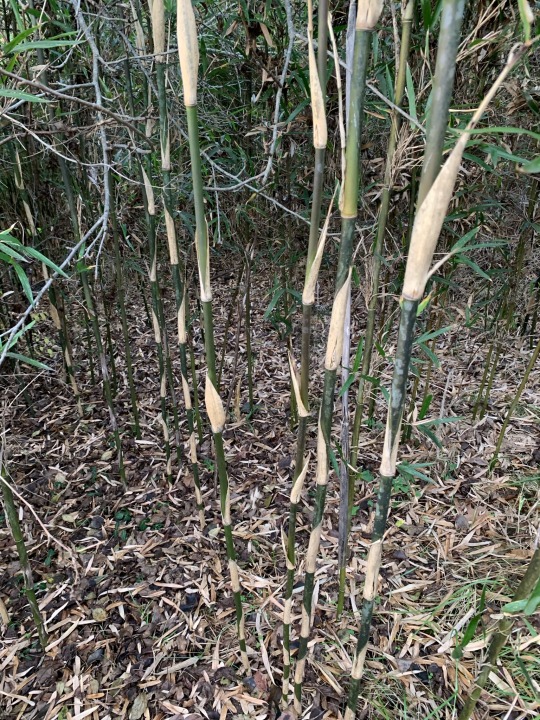

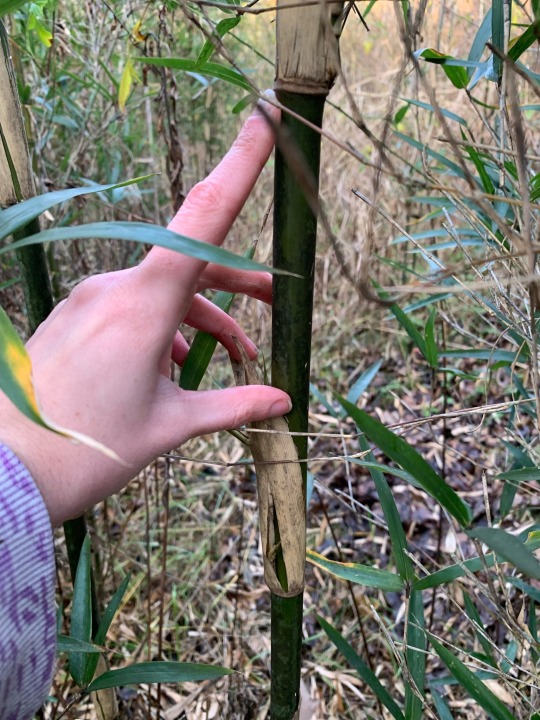
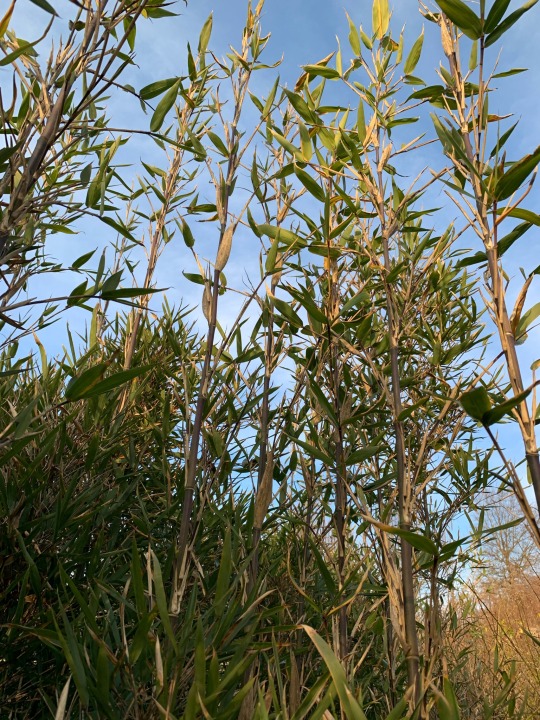
i went into the canebrake today
I really was only able to get into the edge of the cane swath, because this stuff is DENSE. but it was still an awesome experience and I was able to get a better read of what's going on with it
first off: there are like 15-20 bradford pears (mostly further up the slope, out of the cane) and a huge thicket of multiflora rose. There is a little bit of wintercreeper underneath the cane and one honeysuckle bush, but it's still way less than you would expect. The Bradford pears have WICKED thorns, so removing them would be a Task. There's a great deal of goldenrod and some Allegheny blackberry in the patch. Plenty of openish space, I'm thinking of doing some seedbombing in the next few months. I feel like swamp milkweed could thrive there.
My mom has endorsed the guerilla gardening, so really i'm ready to knock on some neighbor's doors and start a gardening coalition. A canebrake protection squad of sorts.
Judging from the size of bradford pears and the size of the canes, I would say it's about 10 years old. Some of the canes approach 12 feet tall. It's so rare to find a thriving stand this large, I'm really excited.
194 notes
·
View notes
Text
Police Gazette Cocktail - America Drinks In Every Word
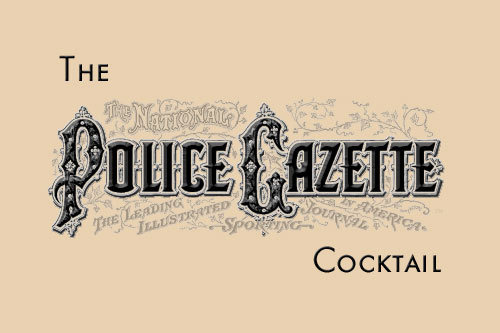
The National Police Gazette Was America's First Tabloid
Founded in 1845, the National Police Gazette, or Police Gazette for short, was the prototype men's lifestyle magazine. Beginning as a chronicle of crime and criminals, thus the name, it was also a sports weekly that featured pin-up girls and a celebrity gossip column which were all sensationalized with a tabloid journalism style of writing.*
Pugilists, Mixologists and Tonsorial Artists
Boxers, bartenders and barbers, in layman's terms, were all prominently showcased in weekly columns. Before title fights were officially sanctioned by the National Boxing Association, it was widely understood that the "world champions" were the fighters listed in the Police Gazette.
Pubs and barber shops were a terrific marketing outlet for spreading the word and as such, their proprietors and patrons were both heavily promoted and catered to. Saloon keepers and tonsorial artists were profiled weekly along with other topics of interest and the comings and goings of various establishments about town. The craft of the cocktail was rising in popularity and the Gazette's coverage regularly included new drink recipes for customers to try and mixology contests for bartenders to enter.
Competition Was Fierce
They also sponsored competitions where global winners were crowned in various sporting events ranging from wood chopping to water drinking to strong man feats. Billed as the "leading illustrated sporting journal in America," and then the world, documentation of these athletic adventures was mixed in with reviews of Broadway shows, circus acts and vaudeville along with juicy gossip about their cast of entertainers, stars of the show and other famous celebrities elsewhere.
Ooh La La!
And if all that wasn't salacious enough, there were tons of racy photographs (bordering on the obscene) of scantily clad women who were burlesque dancers, strippers and call girls.
People loved it! The National Police Gazette sold over 2,225,000 copies per week in 1895.†
Since so many seemed to drink in every word, its only fitting that the Police Gazette have a namesake cocktail or two. And they do.
Behind The Bar - How To Make The Police Gazette Cocktails At Home
Police Gazette Cocktail Recipe No. 1:
1 oz Plymouth gin
3 - 4 dashes gum syrup
2 - 3 dashes Virginia Wild Cherry
1 - 2 dashes Angostura bitters
1 lemon peel twist
In a large bar glass, add two or three lumps of ice, one pony glass of Plymouth gin, three or four dashes of simple syrup, two or three dashes wild cherry cordial and a dash or two of aromatic bitters. Stir well, twist a peel of lemon on top and serve.
Note: This may be the magazine's earliest namesake nip, but drink recipe #2 which follows is definitely the most famous.‡
Police Gazette Cocktail Recipe No. 2:
3 oz whiskey
3 dashes simple syrup
2 dashes aromatic bitters
2 dashes curacao
2 dashes French vermouth
2 dashes maraschino liqueur
2 cherries for garnish
Mix one wine glass of whiskey together with cracked ice and the other ingredients. Strain into a cocktail glass and serve garnished with two cherries.
Note: Richard K. Fox, the publisher of the Police Gazette, published this book too. It also included a recipe for a Gazette Fizz on page 171 with one pony of brandy, one egg yolk, two teaspoons powdered sugar and three dashes of lemon juice in shaved ice topped with seltzer water. No doubt this drink is named for the Police Gazette as well.1
Drinks Similar To Police Gazette Cocktail No. 1
Admiral No. 1 - gin, cherry cordial and lime juice.
Bulldog - cherry brandy, gin and lime.
Gilroy - cherry brandy, dry vermouth, gin, lemon juice and orange bitters.
Hornpipe - cherry brandy, egg white and gin.
Lady Finger - cherry brandy, gin and kirsch.
Maiden's Blush - cherry brandy, gin, lemon juice and triple sec.
Millennium Cocktail / Orange Oasis - dry gin, cherry brandy, ginger ale and orange juice.
Rose Cocktail (French) - cherry brandy, dry vermouth and gin.
Wedding Belle - cherry brandy, Dubonnet Rouge aperitif wine, gin and OJ.
Xanthia - cherry brandy, gin and yellow chartreuse.
Drinks Similar To Police Gazette Cocktail No. 2
Admiral No. 2 - rye or bourbon whiskey, dry vermouth and lemon juice.
Affinity (modern) - Scotch whisky, dry & sweet vermouth, orange bitters and twist of lemon.
Algonquin - rye whiskey, dry vermouth and pineapple juice.
Allegheny - a Dry Manhattan with blackberry brandy.
Boomerang No. 3 - bourbon whiskey, maraschino liqueur, both vermouths, lemon juice, sugar syrup and aromatic bitters.
Brooklyn - bourbon or rye whiskey, dry vermouth, maraschino liqueur and Amer Picon (or Amaro CioCiaro as a substitute).
Byrrh Cocktail - byrrh, dry vermouth and rye whiskey.
Dry Manhattan - rye or bourbon whiskey, dry vermouth and Angostura bitters.
Glasgow No. 1 - Scotch, lemon juice, dry vermouth and orgeat syrup.
Hole-In-One Cocktail - Scotch whisky, dry vermouth, lemon juice and orange bitters.
Old Pal - Campari, dry vermouth and rye whiskey.
Opening Night - dry vermouth, strawberry liqueur and whiskey.
Paisley Martini - gin, dry vermouth and Scotch whisky.
Quebec - Canadian whisky, dry vermouth, Amer Picon (see Brooklyn note) and maraschino liqueur.
Soul Kiss - Dubonnet rouge aperitif wine, dry vermouth, orange juice and whiskey.
A Toast To Manly Men
As the forerunner to the slew of men's lifestyle magazines and websites that are nearly everywhere today, the Police Gazette cocktail makes a great drink for International Men's Day which is celebrated on November 19th. So, raise a glass to your fellow man and keep it pithy.
To health!
Hear, hear.
References
* - Attorney Enoch E. Camp and transcontinental railroad booster George Wilkes were the two journalists who started the newspaper. They sold the Gazette to George W. Matsell in 1866 and Richard Kyle Fox was the editor in its heyday from 1877 to 1922. Publication was suspended from Feb. 11, 1932 until Sept. 5, 1933 so the Gazette didn't get to cover the crime of century and post the police blotters associated with trying to capture the kidnappers who abducted the eldest son of aviator Charles Lindbergh. However, they had extensive coverage of the Herman Rosenthal murder case and the damaging testimony of Jacob Rosenzweig against New York City police Lieutenant Charles Becker along with countless other crimes over the years.
† - Fair, John D., "Physical Culture - Athletic Clubs and Sports" The Encyclopedia Britannica. Web. 4 Sep. 2016.
‡ - "Prominent Saloonkeepers" The National Police Gazette: New York June 16 Jun. 1900: 14. Print. Police Gazette Cocktail recipe submitted by John D. at the West End Hotel.
1 - Charles S. Mahoney, The Hoffman House Bartender's Guide - How to Open a Saloon and Make It Pay (New York: Richard K. Fox Publishing, 1905), 152. Print.
0 notes
